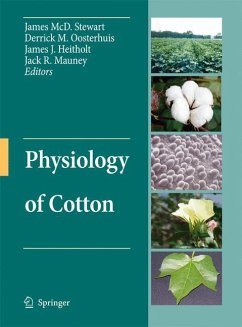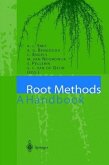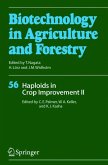Cotton production today is not to be undertaken frivolously if one expects to profit by its production. If cotton production is to be sustainable and produced profitably, it is essential to be knowledgeable about the growth and development of the cotton plant and in the adaptation of cultivars to the region as well as the technology available. In addition, those individuals involved in growing cotton should be familiar with the use of management aids to know the most profitable time to irrigate, apply plant growth regulators, herbicides, foliar fertilizers, insecticides, defoliants, etc. The chapters in this book were assembled to provide those dealing with the production of cotton with the basic knowledge of the physiology of the plant required to manage the cotton crop in a profitable manner.
Hinweis: Dieser Artikel kann nur an eine deutsche Lieferadresse ausgeliefert werden.
Hinweis: Dieser Artikel kann nur an eine deutsche Lieferadresse ausgeliefert werden.
From the reviews:
"Physiology of Cotton is well organized into 35 chapters, addressing topics ranging from the origin of cotton to genetic engineering applications in cotton improvement. Chapter contributors explain the concepts of cotton physiology through illustrations, graphs, and equations. ... will serve as a useful reference for researchers and faculty who will train the next generation of scientists challenged with meeting the fiber needs of a growing population. ... Summing Up: Recommended. Upper-division undergraduate through professional collections." (V. G. Kakani, Choice, Vol. 47 (11), July, 2010)
"Physiology of Cotton is well organized into 35 chapters, addressing topics ranging from the origin of cotton to genetic engineering applications in cotton improvement. Chapter contributors explain the concepts of cotton physiology through illustrations, graphs, and equations. ... will serve as a useful reference for researchers and faculty who will train the next generation of scientists challenged with meeting the fiber needs of a growing population. ... Summing Up: Recommended. Upper-division undergraduate through professional collections." (V. G. Kakani, Choice, Vol. 47 (11), July, 2010)








